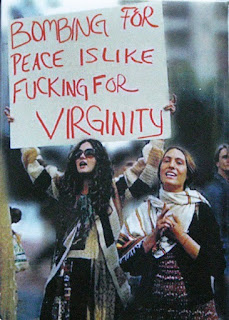I have complaining writing about
gentrification and development of metropolitan Portland for some time now. It
is a subject I think many people don’t want to examine. Recently, it came to my
attention (in this PBJ May article) that city commissioners voted 3-1 to create
a $169 million dollar “urban renewal area” around Portland State University.
For geographical knowledge, PSU is in downtown, flanks the business district as
well as the wealthy neighbourhoods around Good Hollow. The Portland Business Journal
said the move would “revitalize the sleepy south side of downtown” and that
officials at Portland State claim it’s critical for PSU’s continued growth. (Sidebar:
if PSU is growing, then why is it cutting student jobs and health care
coverage?)
My apartment complex lies near PSU, on the
edge of the so-called business district. As a long-time resident of the
downtown area, I will bluntly say that this is an obscene waste of money and
resources. This area absolutely does not need any “urban renewal”.
If you compare my neighbourhood to that of
the Alberta neighbourhood, the N Williams area, Kenton area, or the Southeast
Powell neighbourhoods…you can see we got it good. We have infrastructure that
isn’t falling apart, we have direct access to a major grocery store and easy
access to an organic grocery. The roads are not messed up, we can access the
MAX, the streetcar, safe sidewalks, all of the bus lines and there are
well-placed bike lanes. The major source of crime in the area is larceny, which
is benign if you compare it to the major source of crime in neighbourhoods
further out from the SE Hosford-Abernathy and Belmont neighbourhoods buffer or
in North Portland.
In their 2011 November
article “Market of No Choice”, the Willamette Weekly pointed out that
the Portland Development Commission (another supporter of the urban renewal
area) conducted a study that concluded a “high-end grocery store near Portland
State University” was needed. Furthermore, it was also evident that the PDC’s
study didn’t consider the “food deserts” of Portland. Food deserts are defined
by the U.S. Department of Agriculture as concentrations of low-income residents
living a mile or more from a large grocery store.
Instead, the study
looked at high-income areas including the PSU site, Belmont and 10th
as well as two sites at the South Waterfront (the South Waterfront is nothing
but high-rises with condos and overpriced townhouses. There are leases due to
the housing market bubble, but the residents do not qualify as “low-income”).
Willamette Week further reported that the PDC’s spokeswoman
Anne Mangan claimed the agency paid for the $18,700 study because it had heard
complaints from downtown residents unhappy with their choice of grocery stores.
Let me break this down
for you, assuming that most of the residents of downtown are high-income
earners (which minus the students and low-income housing projects, they are);
they already have more access (money) to be able to buy food at the grocery
store of their choice. I researched mileage from my neighborhood (which is
demographically high-income earners) and found four different grocery stores
under a mile and a half away: the aforementioned Safeway is 0.5 or half a mile,
a Whole Foods is 1 mile, a Fred Meyer is 1.2 miles and a Trader Joes is 1.4
miles away.
So why are these supposed
downtown residents unhappy with their access to grocery stores? Two of their
choices are high-end and Fred Meyer has all the basics with reasonable prices
and quality. It’s true, Safeway isn’t the best…but it is still there. Downtown
is not a food desert.
These actions and
proposals show that the Portland Development Commission, the Portland Business Alliance,
the mayor (also in favor) and city commissioners are not on the side of
equality when it comes to access to basic needs for its residents. It looks
like it’s pandering to a few whiny rich people honestly. Why not use the grant
to improve roadways in Southeast (many with gigantic dangerous potholes), or build
a grocery store in the Lents neighborhood of East Portland?
Perhaps most telling of
all, the vice chairman of the Portland Multnomah Food Policy Council, David
McIntyre, says he didn’t know the PDC was conducting the study and that “when
it comes to food [access], this is an issue everywhere, but Portland can be a
bit segregated.”
Think about it. Urban
development/renewal reinforces the economic (and yes, still sometimes racial)
segregation that splits our city. That’s gentrification at work.




















